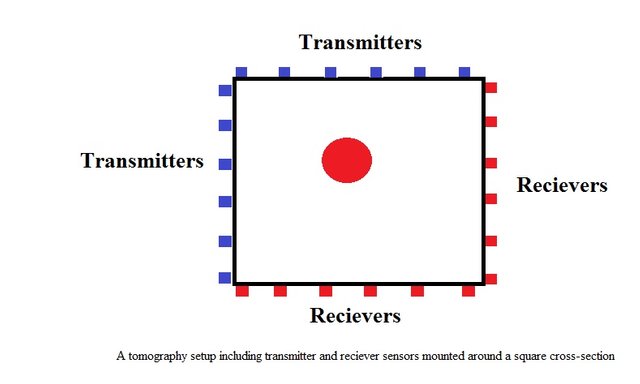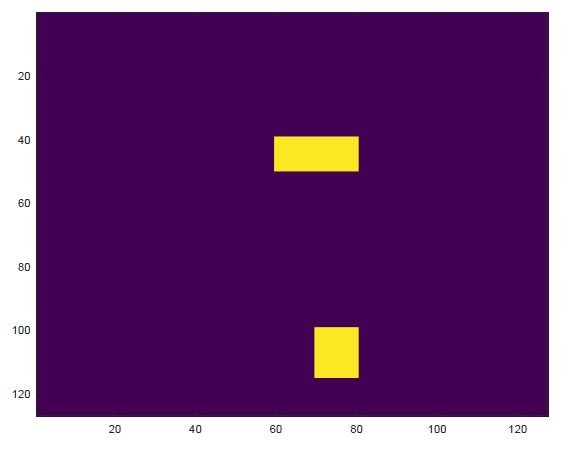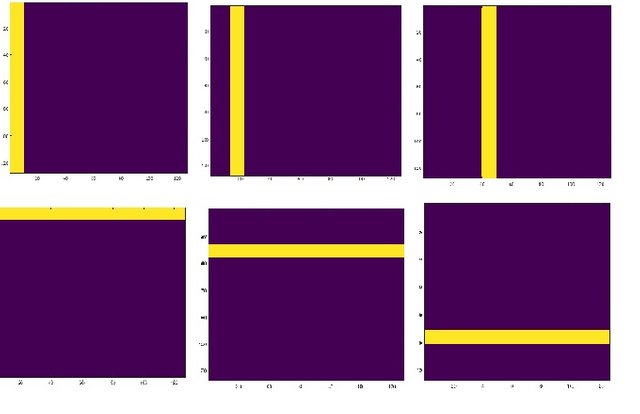GNU-Octave - Computrized Tomography and Image Reconstruction
Introduction
One of the most amazing invention of all time is computerized tomography (CT). This invention allows to access inside a body without any damage or surgical operation. CT is a diagnostic imaging test used to create detailed images of internal organs, bones, soft tissue and blood vessels. he cross-sectional images generated during a CT scan can be reformatted in multiple planes, and can even generate three-dimensional images which can be viewed on a computer screen. for more information, please have a look at:
https://en.wikipedia.org/wiki/CT_scan
The idea behind ct scan is that when X-ray projections are passed through a body, they have different attenuation depends on the body organs. This attenuated projections are collected on the other side and then process by a method called image reconstruction to generate a cross-section of the body. Therefore, image reconstruction part plays an important role in CT scan.
What Will I Learn?
You will learn how to generate a tomographic phantom in GNU-Octave
You will learn How to simulate sensors around the phantom
You will learn how to generate sensitivity maps for projections.
Finally you will learn how to simulate Radon transform or data collection by sensors
Requirements
Basic knowledge of tomography and image reconstruction
GNU-Octave software downloadable from: https://www.gnu.org/software/octave/
GNU-Octave on Github : https://github.com/NexMirror/Octave
Code samples on Github: https://github.com/mahdif60/Image-reconstruction-from-projetion
Difficulty
- Advanced
Tutorial Contents
Image reconstruction methods are used to create two-dimensional or three-dimensional images from sets of one-dimensional projections. The mathematical foundation of these reconstruction methods called Radon transform and inverse Radon transform. Collected projections are called Radon transform while the image reconstruction is called inverse radon transform.
There exist a lot of method to reconstruct image from projections which are divided to analytical methods include linear back projection (LBP), filter back projection (FBP), etc. and iterative methods e.g. algebraic reconstruction technique. Each of these methods have pros and cons. for example analytical methods are fast but not accurate while on the other hand iterative methods are accurate but slow. any tomography method needs three steps.
hardware installation around a body.
Data collection
image reconstruction
Here we simulate the first and second steps in GNU-Octave software while we show you how to reconstruct an image from this simulation data.
There are different setups for hardware installation. one of the simplest set up is to use only two angles as x and y to collect the data. In this way different number of sensors can be placed in two sides of a square as shown in Figure 1.

Figure 1. a tomography set up with 12 transmitters and 12 recievers
Following codes show you how to generate a phantom include two squares using GNU-Octave.
clear
clc
%% --------------- Generate a phantom -----------------------
A=zeros(127,127);
A(40:50,60:80)=1;
A(100:115,70:80)=1;
imagesc(A);
The result is as follow:

Now is the time to simulate sensors setup around the phantom and generate projections. Here we use 10 transmitters and 10 receivers in each side of phantom following Figure 1. Therefore, total number of transmitters (receivers) are 20 for this example. For each sensor we need a sensitivity map. In tomography this step is called forward problem. These sensitivity maps are multiplied by phantom to generate the projection of the related sensor. The following codes shows the codes including sensitivity map generation.
%% ------------- two angle sensors in x and y direction --------
N=20; % number of sensors in each side
L=10; % length of each sensor
%% ---------- sensitivity maps -----------------
for i=1:20
S{1,i}=zeros(127,127);
end
t=1;
for i=1:10 % Vertical projections
b=S{1,i};
b(1:127,t:t+9)=1;
t=t+13;
S{1,i}=b;
end
t=1;
for i=11:20 % horizontal projections
b=S{1,i};
b(t:t+9,1:127)=1;
t=t+13;
S{1,i}=b;
imagesc(b)
end
The following image shows some of the sensitivity map generated by these codes.

Now its time to multiply sensitivity maps with phantom matrix to achieve Radon space or receivers data. following codes shows how to do this step.
%% ------------ Multiplying Sensitivity map to phantom to get Radon transform or sensor data.
for i=1:20
b=S{1,i};
D(1,i)=sum(sum(A.*b));
end
The output (variable D) is the Radon space (projections) data which in real world are collected by receiver sensors around the body. Here is the output for the above phantom.
D =
Columns 1 through 18:
0 0 0 0 33 206 54 0 0 0 0 0 0 210 0 0 0 22
Columns 19 and 20:
110 0
Conclusion:
In this tutorial we learn what is image reconstruction. what is a phantom and how to generate it in Octave software. what is a sensitivity map and how to generate projection using sensitivity maps. in next section we will learn about a complete data tomography setup and how to generate a Sinogram.
Curriculum
This is the first course on image reconstruction from projections.
Posted on Utopian.io - Rewarding Open Source Contributors
Your contribution cannot be approved because it does not follow the Utopian Rules.
NexMirror/Octave is not a proper mirror for GNU Octave since it's not in sync with the original mercurial repository. Mercurial repository takes commits everyday but last updates of this mirror is months old. So this repository is not approved. Also I should add that there is no proper GitHub repository for GNU Octave and therefore no possibility to be rewarded with GNU Octave contributions. You can see the related rule here:
Contributions for un-official repositories will only be accepted if present in the Utopian un-official repository whitelist.
And you should never repost your contributions. You can only get approved after a rejection if the moderator allows you to corrected some little mistakes by editing your post or when the decision on the post is changed by the supervisor of the moderator.
You can contact us on Discord.
[utopian-moderator]
Ok. Noted. but how about this link
https://utopian.io/utopian-io/@safakcoban/the-formation-of-special-matrices-in-gnu-octave-tutorial-lesson-4
or
https://utopian.io/utopian-io/@safakcoban/basic-matrix-operations-in-gnu-octave-tutorial-lesson-1
or
https://utopian.io/utopian-io/@safakcoban/obtaining-sub-matrix-from-matrix-inverse-matrix-matrix-transposition-in-gnu-octave
or
https://utopian.io/utopian-io/@wodsuz/solve-and-plot-your-equations-with-octave
or
https://utopian.io/utopian-io/@wodsuz/advanced-drawing-with-octave
I think I followed the rules. and this is accepted by other moderators. hopefully you considered this or maybe rules have different interpretation for different moderators.
It's not about the moderator, Utopian has stricter moderation than before. You shouldn't compare a 2 months old post with this one. And I was the one made research about GNU Octave repositories and announced that there is no proper one for the project 2 weeks ago. Back then, there was no whitelist rule, and you are only responsible and judged for current rules.
Ok. Thank you for your response. I will consider it for my future work.
This is an introduction for tomography which is a course in high level education. I will write all my codes and tutorials based on Scilab and python. Hope to be accepted.
Congratulations @mahdif60! You have received a personal award!
Click on the badge to view your Board of Honor.
Do not miss the last post from @steemitboard!
Participate in the SteemitBoard World Cup Contest!
Collect World Cup badges and win free SBD
Support the Gold Sponsors of the contest: @good-karma and @lukestokes
Congratulations @mahdif60! You received a personal award!
You can view your badges on your Steem Board and compare to others on the Steem Ranking
Vote for @Steemitboard as a witness to get one more award and increased upvotes!